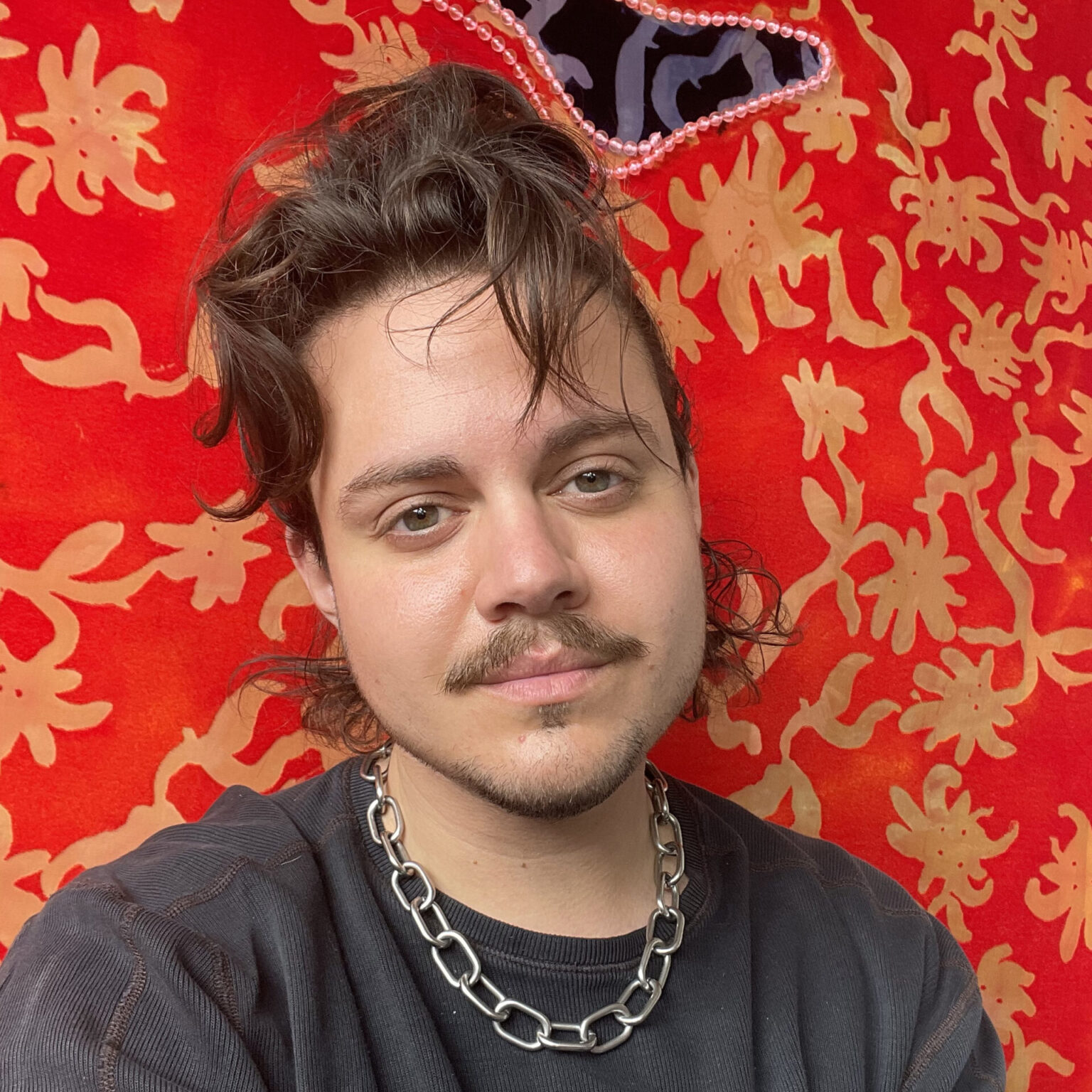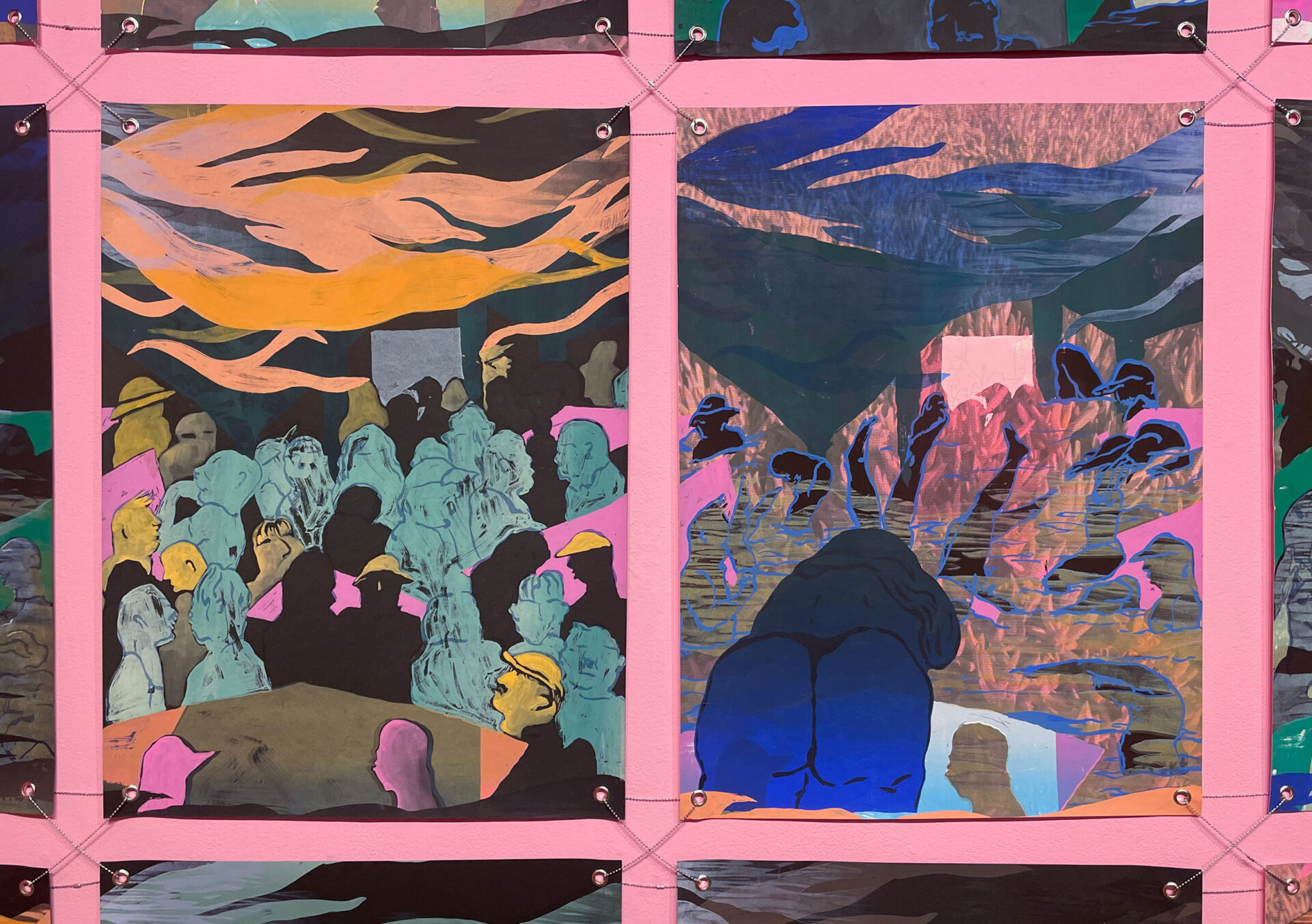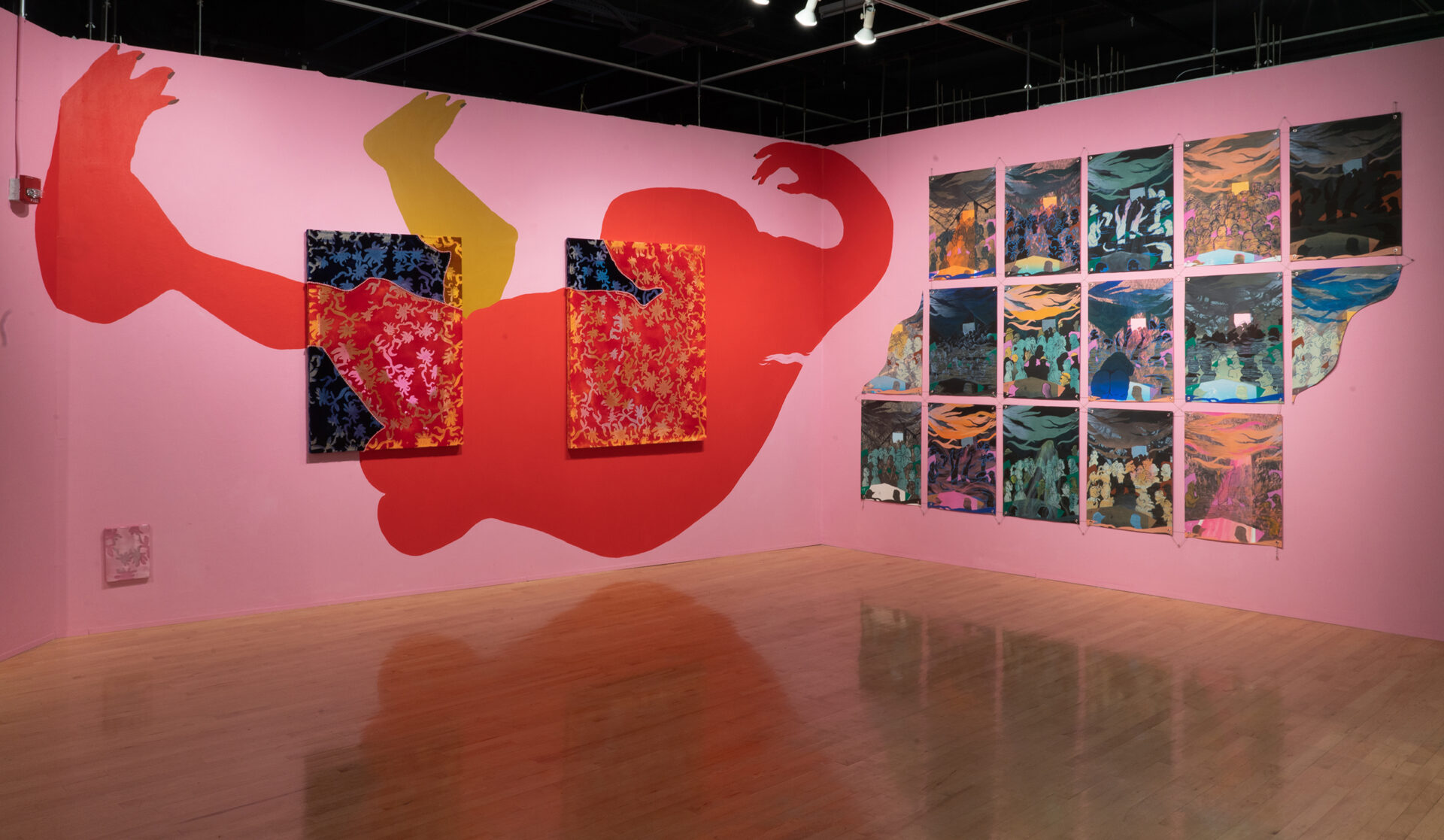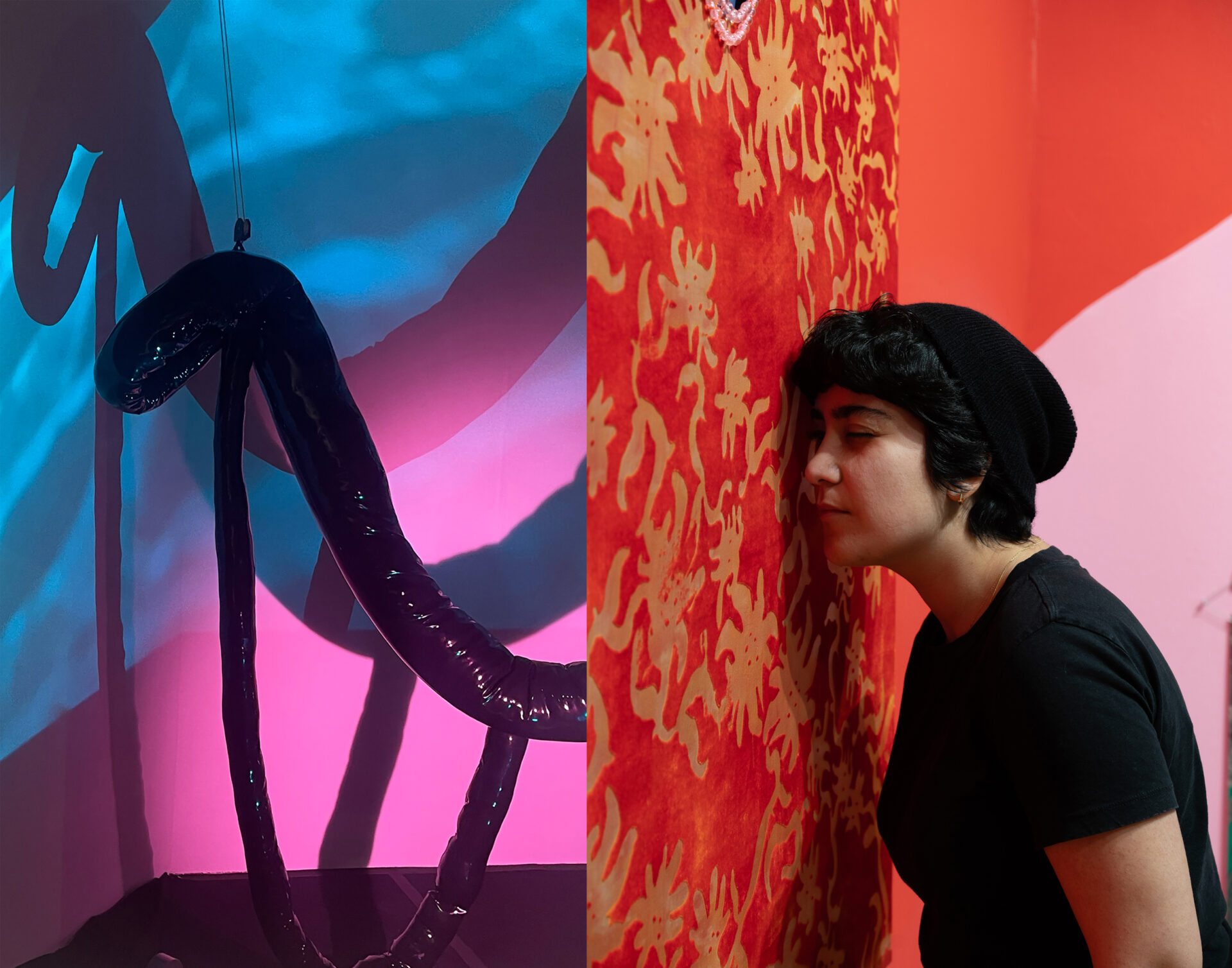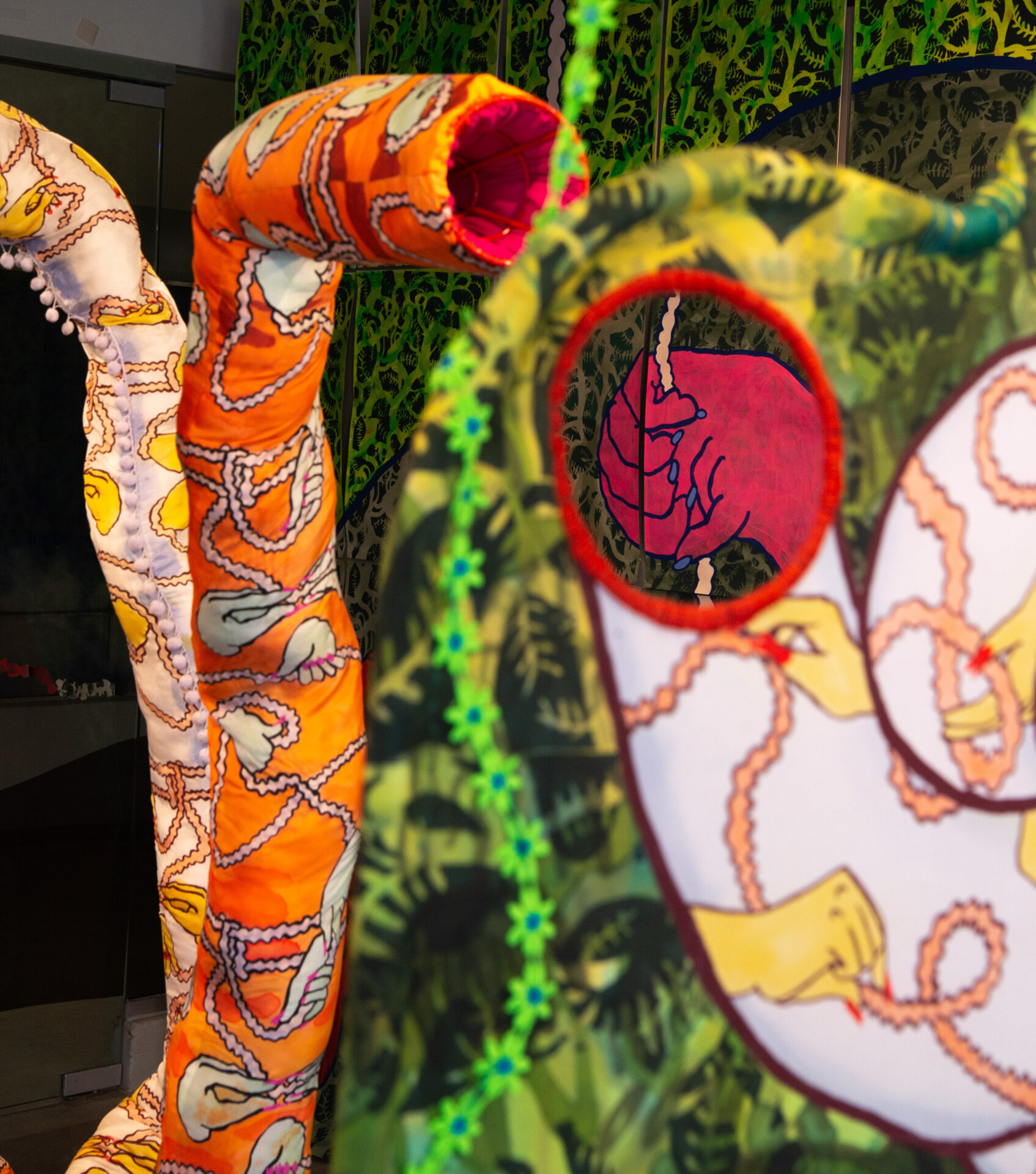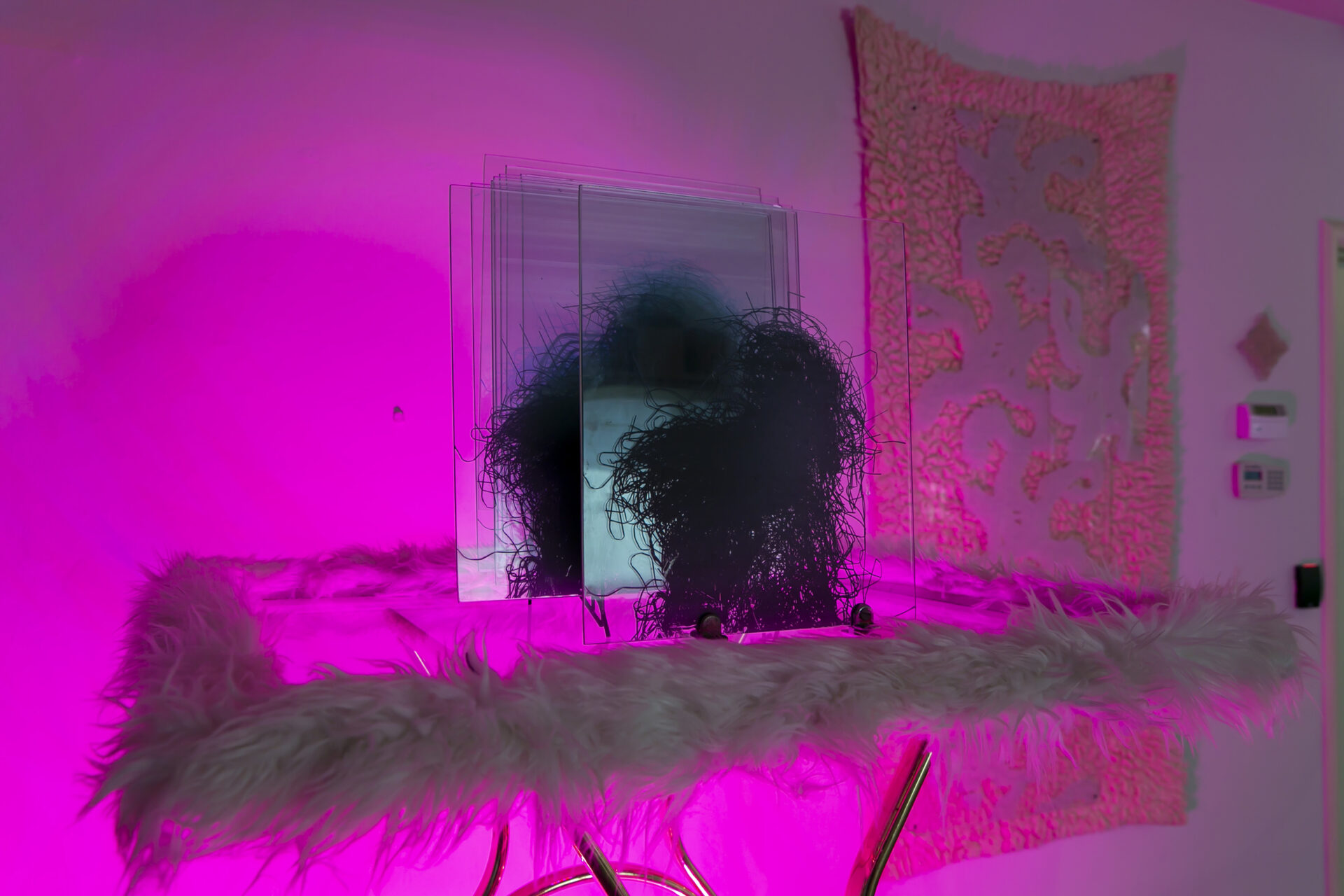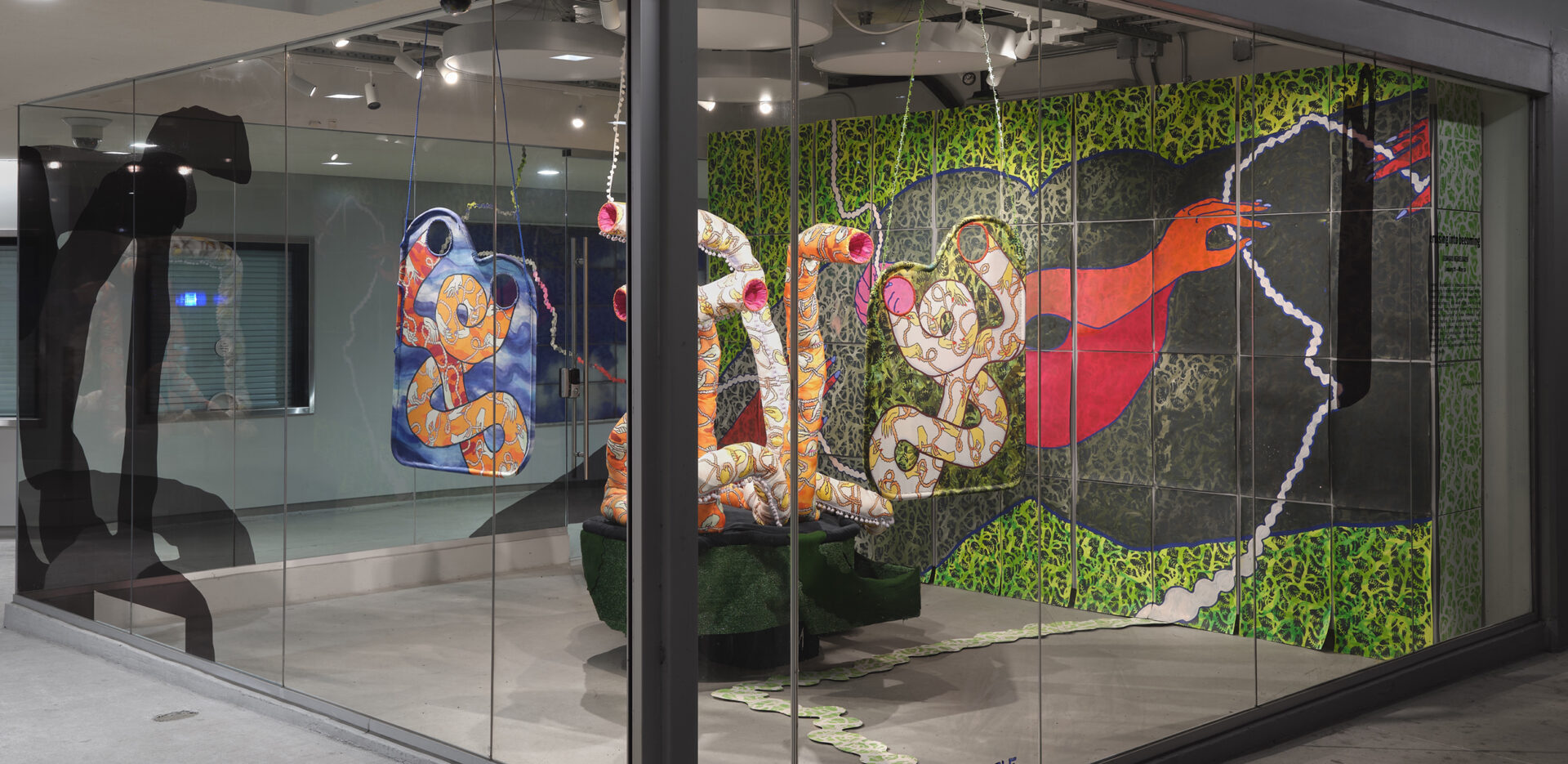
Leonard Reidelbach, "cruising into becoming," 2022; silkscreened and acid dyed silk, vintage floral trim, pvc pipe, conduit from SFSU electrician’s “bone yard”, scrap wood from wood shop, rope, embroidered with yarn from textile departments donated yarn collection, fleece, felt, pillow stuffing , 10 x 10 x 10 ft; photo by Chris Gunther.
Leonard Reidelbach
Artist Statement
My work opposes the current legislature’s strategy to weaponize trans rights, pushing a fascist agenda threatening everyone’s privacy and autonomy. The media intentionally strips trans narratives of nuance and pleasure—qualities that define humanity.
In my work, I control the viewer’s points of access and make the act of seeing an active process. Through this, I invite the audience to experience the joy that comes from opacity. I use silkscreen to create variations in matrixes. Pattern carries a history that I physically reconfigure, opening the structure to the infinite potential of past and future realities. Forming new ways of seeing and relating is a way to invite a more welcoming future, not only for transsexuals but for all of us, as we navigate a global shift in privacy, information, and access to truth as a collective.
While at Headlands
I plan to collaborate physically with the natural and built environment of Headlands through installation and image-making. I begin from an aesthetic response to the world around me; meaning in my work stems from the patterns of movement in my lived experience. Through a maximalist use of color and materials like velvet, fiberglass, latex, and silk, I embrace pleasure over legibility. As elements integrate into installation, I build a context that asks you to consider your specificity as a viewer. I am interested in the way that artists have responded to Headlands’ spaces in the past; I think about how Ann Hamilton used architectural intervention to facilitate community-building in her Mess Hall. I am curious about what will develop from a relationship with the mercurial beauty of the foggy coast and the expansive architecture of the Headlands campus.
